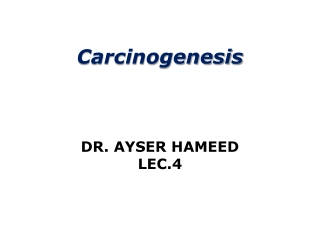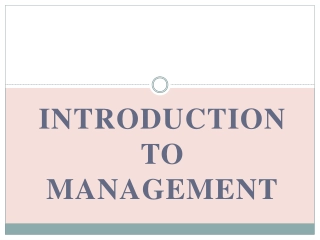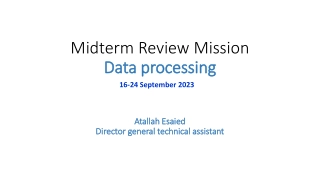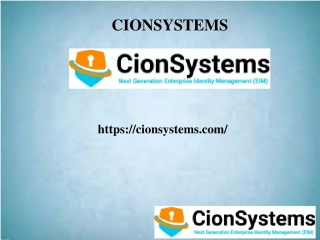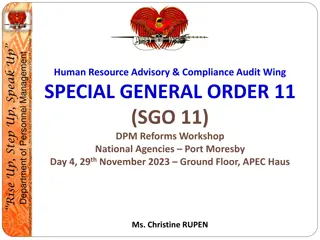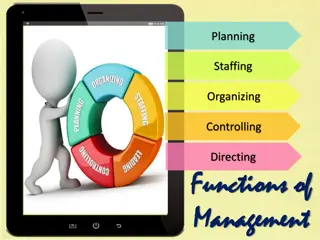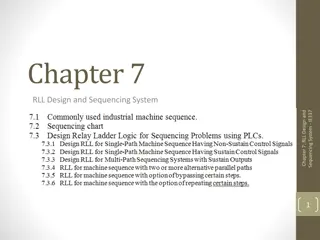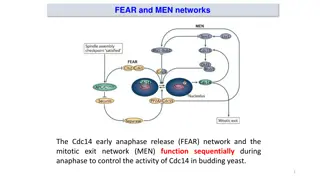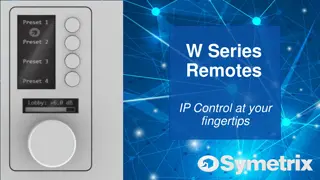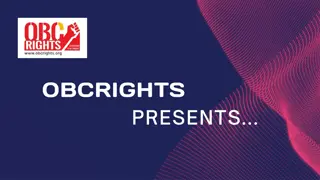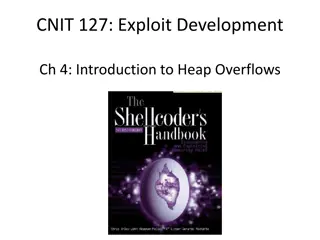
Organizational Control Processes and Importance
Explore the concept of organizational control, its significance, and implementation methods such as measuring performance, comparing against standards, and taking corrective actions. Learn how control systems empower managers, protect the workplace, and link planning with controlling activities efficiently.
Download Presentation

Please find below an Image/Link to download the presentation.
The content on the website is provided AS IS for your information and personal use only. It may not be sold, licensed, or shared on other websites without obtaining consent from the author. If you encounter any issues during the download, it is possible that the publisher has removed the file from their server.
You are allowed to download the files provided on this website for personal or commercial use, subject to the condition that they are used lawfully. All files are the property of their respective owners.
The content on the website is provided AS IS for your information and personal use only. It may not be sold, licensed, or shared on other websites without obtaining consent from the author.
E N D
Presentation Transcript
By: Eko Budi Sulistio Email: sulistio_eb@yahoo.co.id
Pendahuluan Salah satu kelemahan anggotadalam organisasi adalah rendahnya MOTIVASI INTERNAL dalam menjalankan tugas-tugasnya. Perlu adanya MOTIVASI EKSTERNAL agar kinerja anggota terkendali, terarah dan efektif. Motivasi Eksternal dapat berupa: Gaji Sistem Karier Fasilitas Pengendalian Kinerja (melalui reward and punihsment)
What is Controlling? The process of monitoring activities to ensure that they are being accomplished as planned and of correcting any significant deviations.
What is the Purpose of Controlling To ensure that activities are completed in ways that lead to accomplishment of organizational goals.
How to do Controlling? Emphasizes organizational authority and relies on rules, regulations, procedures, and policies. Regulates behavior by shared values, norms, traditions, rituals, and beliefs of the firm s culture.
Why is Controlling important? Planning Controls let managers know whether their goals and plans are on target and what future actions to take. Empowering employees Control systems provide managers with information and feedback on employee performance. Protecting the workplace Controls enhance physical security and help minimize workplace disruptions.
The Process of Control 1. Measuring actual performance. 2. Comparing actual performance against a standard. 3. Taking action to correct deviations or inadequate standards.
Measuring: How and What We Measure Sources of Information Control Criteria Employees Personal observation Satisfaction Statistical reports Turnover Oral reports Absenteeism Written reports Budgets Costs Output Sales
Comparing Determining the degree of variation between actual performance and the standard. Significance of variation is determined by: The acceptable range of variation from the standard (forecast or budget). The size (large or small) and direction (over or under) of the variation from the standard (forecast or budget).
Managerial Action Courses of Action Doing nothing Only if deviation is judged to be insignificant. Correcting actual (current) performance Immediate corrective action to correct the problem at once. Basic corrective action to locate and to correct the source of the deviation. Corrective Actions Change strategy, structure, compensation scheme, or training programs; redesign jobs; or fire employees Revising the standard Examining the standard to ascertain whether or not the standard is realistic, fair, and achievable. Upholding the validity of the standard. Resetting goals that were initially set too low or too high.
Pengendalian Mencakup Kegiatan Pembinaan Pengawasan
APA YANG TERJADI JIKA TIDAK ADA PENGENDALIAN Jenuh Malas Tidak Profesional Tidak Kreatif Kerja apa adanya Kerja sembarangan (tidak maksimal) Tidak Tepat waktu dan sasaran Banyak melakukan kesalahan-kesalahan
Controlling for Organizational Performance Permormance: The end result of an activity Organizational Performance: The accumulated end results of all of the organization s work processes and activities
Organizational Performance Measures Organizational Productivity Productivity: the overall output of goods and/or services divided by the inputs needed to generate that output. Organizational Effectiveness Measuring how appropriate organizational goals are and how well the organization is achieving its goals.
Tools for Controlling Organizational Performance Feedforward Control A control that prevents anticipated problems before actual occurrences of the problem. Concurrent Control A control that takes place while the monitored activity is in progress. Feedback Control A control that takes place after an activity is done.
Pengawasan Input (Pengawasan Pendahuluan) Pengawasan yang dibuat untuk mengantisipasi masalah-masalah atau penyimpangan-penyimpangan dari standar atau tujuan dan memungkinkan koreksi dibuat sebelum suatu tahap kegiatan tertentu diselesaikan. Pengawasan ini bersifat aktif dan agresif yakni dengan mendeteksi masalah-masalah dan mengambil tindakan yang diperlukan sebelum sesuatu terjadi. Pengawasan ini akan efektif jika manajer memiliki informasi yang akurat dan tepat tentang perubahan-perubahan lingkungan dan tujuan.
Pengawasan Proses (Pada Saat) Pengawasan ini sering disebut sebagai Monitoring. Sifatnya Ya Tidak , berhenti terus . Artinya ketika ditemukan suatu penyimpangan dalam pelaksanaan kegiatan, maka dapat direkomendasikan apakah tindakan dapat diteruskan ataukah harus dihentikan. Disesuaikan dengan jenis penyimpangan dan kondisi organisasi.
Pengawasan Akhir (Output) Pengawasan yang dilakukan untuk mengukur hasil dari suatu kegiatan yang telah selesai dilakukan. Penemuan-penemuan penyimpangan atas pelaksanaan kegiatan itu akan digunakan untuk menilai kegaiatan sejenis dimasa yang akan datang. Pengawasan ini bersifat histories.
Karakter Pengawasan yang Efektif Akurat; akurasi data menyebabkan organisasi dapat mengambil keputusan yang tepat Tepat waktu Objektif dan Menyeluruh Terpusat pada titik-titik pengawasan strategis Realistik secara ekonomis Terkoordinasi dengan aliran kerja organisasi Fleksibel Bersifat sebagai petunjuk dan operasional Diterima para anggota organisasi
Kesimpulan Pengendalian dapat dilakukan di awal, di tengah maupun di akhir. Pengendalian penting dilakukan untuk menjamin semua tindakan anggota organisasi on-the track Pengendalian tidak ditujukan semata-mata mengawasi dan memberikan sanksi, namun lebih penting adalah usaha preventif untuk mencegah terjadinya deviasi.



